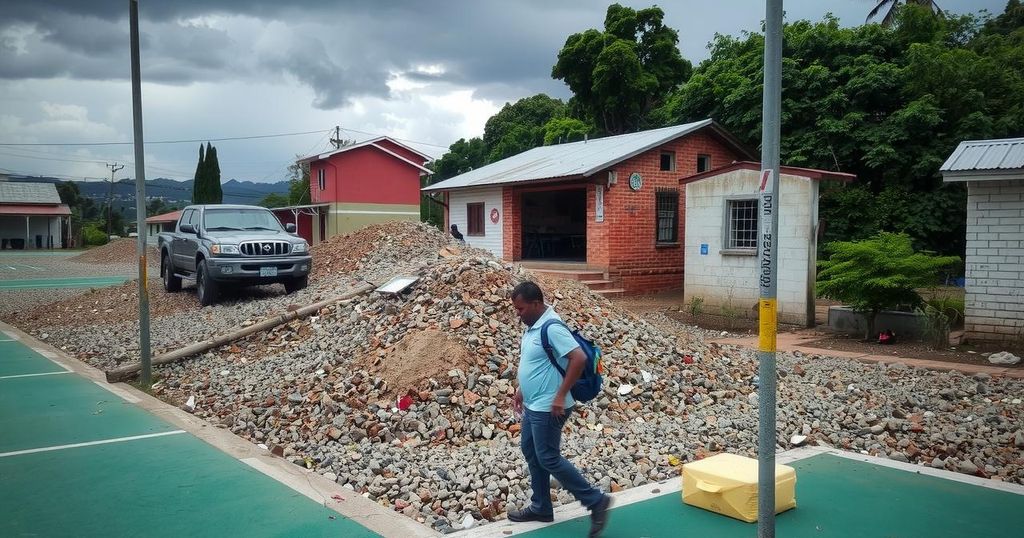El Salvador Remembers the Devastating Earthquake of 1999 and Fears a Repeat

This article discusses the devastating earthquake that struck El Salvador 24 years ago, highlighting its immense destruction, loss of life, and ongoing fears due to recent seismic activity. A study by Spanish scientists indicates a revived threat from the Guaycume fault, which is capable of producing a similarly catastrophic event in the future.
On this day, 24 years ago, El Salvador experienced one of its most devastating earthquakes, which struck at 11:35 AM local time. The seismic activity lasted for 45 seconds and caused widespread destruction, particularly in Las Colinas, a colony in Santa Tecla, La Libertad, where a landslide buried over a hundred homes. The earthquake’s epicenter was located 18 kilometers off the coast of Usulután at a depth of 60 kilometers, affecting 11 out of the country’s 14 departments.
This catastrophic event resulted in 944 fatalities, left over a million individuals affected, and caused significant economic losses. Observations of increased seismic activity in recent weeks across La Unión, La Paz, and Sonsonate have instigated fears of a similarly destructive earthquake, potentially nearing a magnitude of 7.7 on the Richter scale. A study conducted by Spanish scientists has identified the Guaycume fault, the site of the 1999 disaster, as a potential source of future seismic activity. This alarming report has exacerbated public anxiety regarding the possibility of another disaster.
El Salvador has a history of seismic activity due to its location along the Pacific Ring of Fire. The earthquake that occurred 24 years ago on this date remains one of the most significant disasters recorded in the nation. Geological studies suggest that the Guaycume fault is capable of producing high-magnitude earthquakes, raising concerns among seismologists and the public alike. Understanding the history and geological factors contributing to such seismic events is crucial for preparedness and risk mitigation.
The devastating earthquake of 1999 still resonates in the memory of the Salvadoran people, reminding them of the fragility of life amidst nature’s forces. As recent geological studies indicate the potential for similar seismic events, it is vital for authorities and citizens alike to remain vigilant and prepared for any eventualities. Continuous monitoring and public education on earthquake preparedness may mitigate the impacts should another disaster occur, ensuring that the lessons of the past are not forgotten.
Original Source: www.plenglish.com








